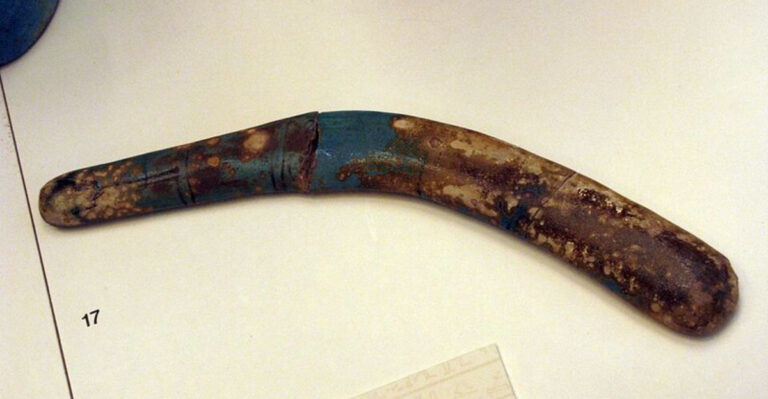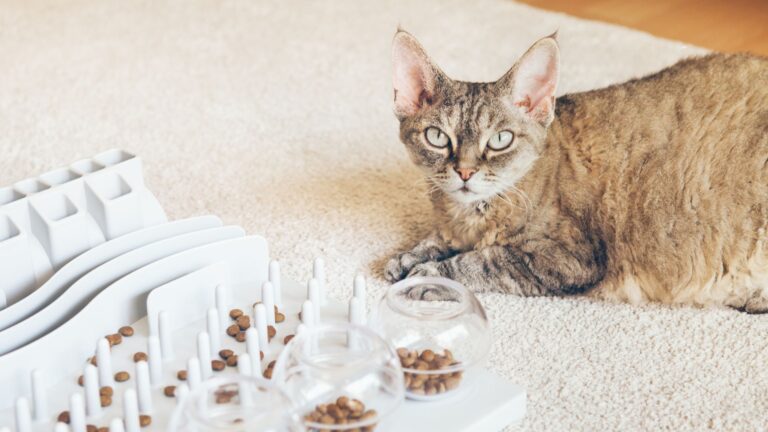Easy Tips To Help Keep Your Cat’s Teeth Healthy
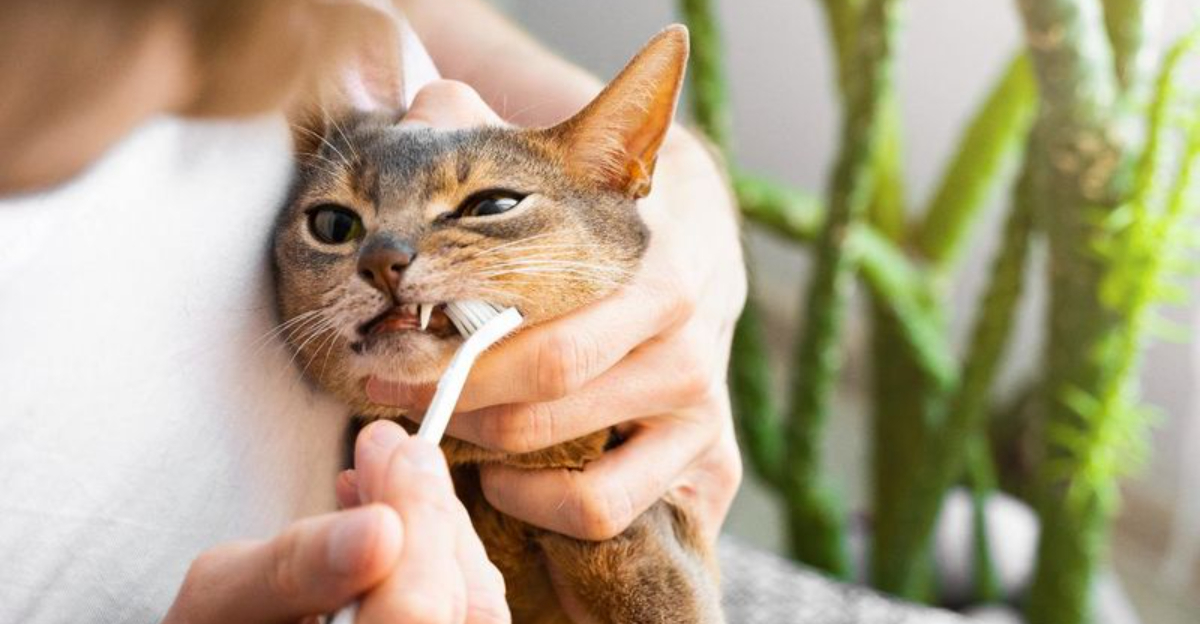
Ever noticed your furry friend’s breath making you wrinkle your nose? Bad breath in cats isn’t just unpleasant – it’s often a sign of dental problems brewing beneath those tiny fangs.
Feline dental health impacts everything from eating habits to overall wellbeing, yet many pet parents overlook this crucial aspect of care. These simple strategies will help keep those pearly whites in purr-fect condition without turning your home into a battleground.
1. Start Dental Care Young
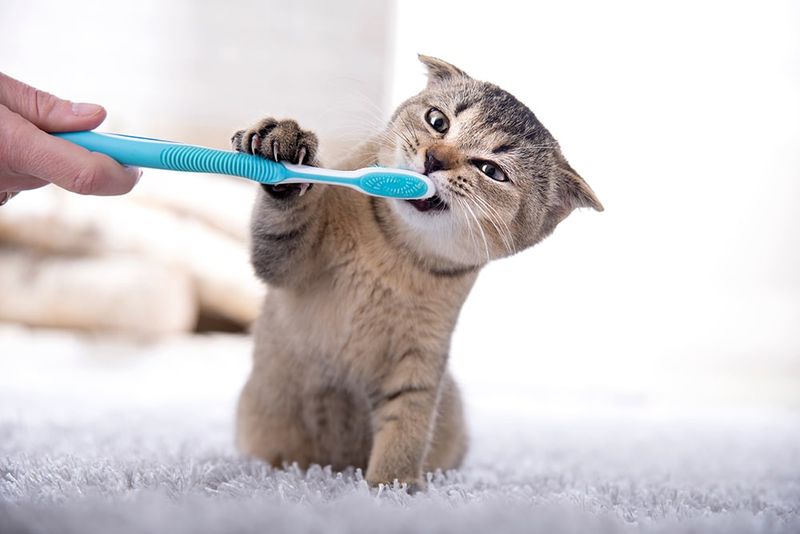
Kittens adapt more easily to tooth brushing than older cats with established habits. Introduce dental care routines when your feline friend is still young and curious.
Begin with gentle finger touches around their mouth, gradually working up to a pet-safe toothbrush. Your patience now creates lifetime benefits, making dental care feel like normal pampering rather than a scary ordeal.
2. Choose Special Dental Treats
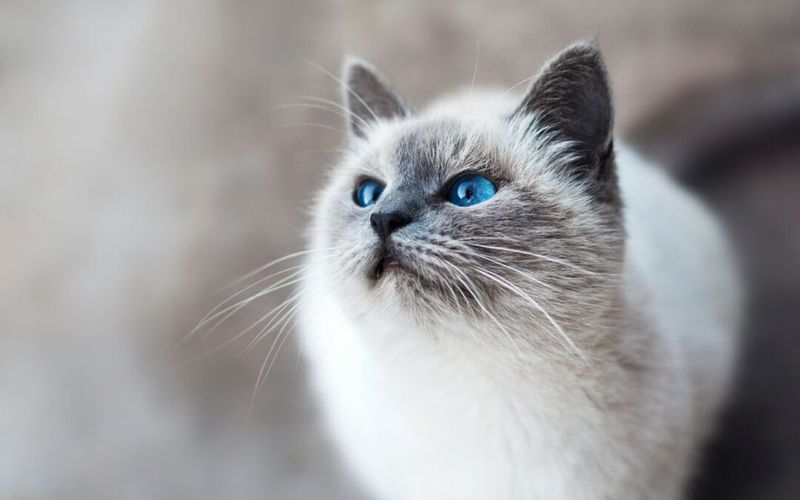
Crunchy dental treats do double duty as rewards and teeth cleaners. Their special texture helps scrape away plaque while satisfying your cat’s munchies.
Look for treats with the Veterinary Oral Health Council (VOHC) seal of approval. These scientifically-tested options actually work, unlike some imposters. Limit treats to 10% of daily calories to avoid weight gain while supporting dental health.
3. Invest in Dental Toys
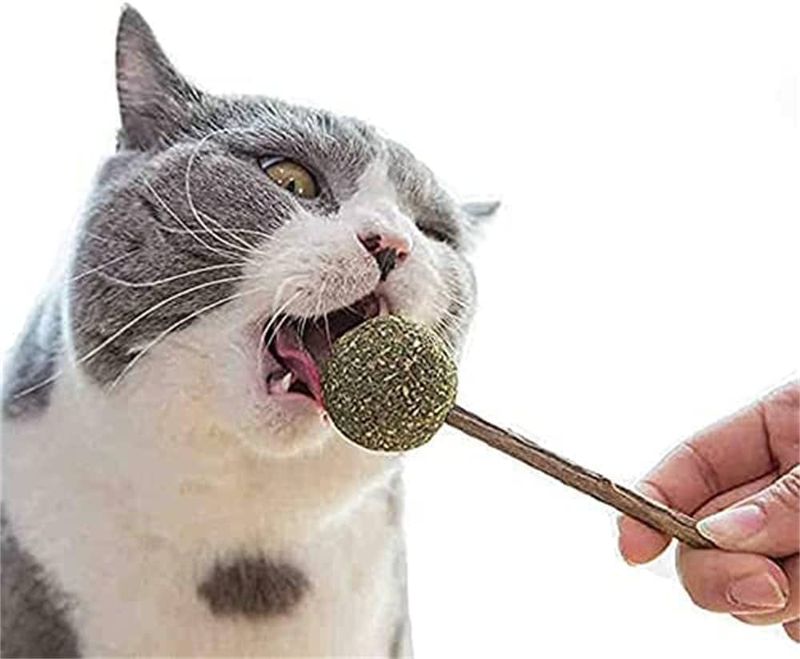
Playtime can double as dental care with the right toys. Certain cat toys feature special ridges and textures designed specifically to clean teeth during play.
Rope toys with fibers act like dental floss, while rubber toys with nubs massage gums and remove light plaque. Refresh these toys regularly to maintain interest. Your cat won’t even realize they’re getting dental care while having fun!
4. Serve Dental-Friendly Kibble
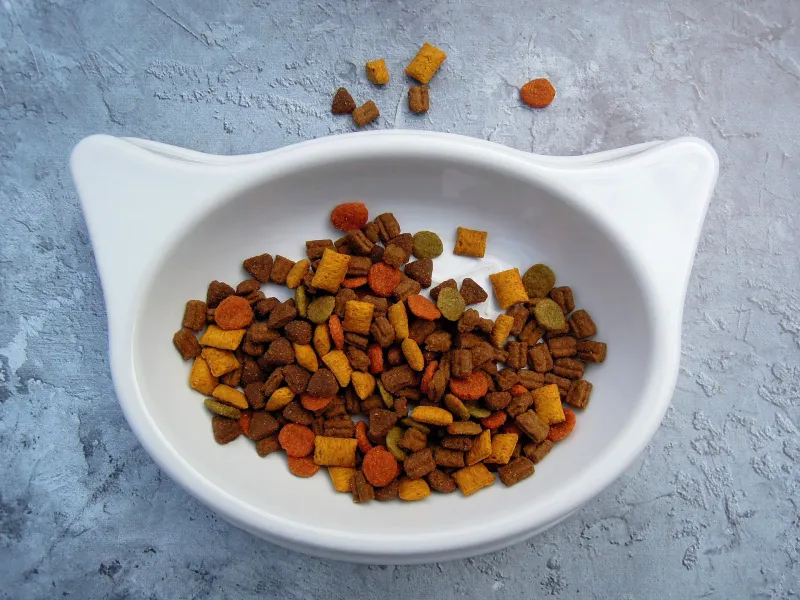
Not all cat foods are created equal when it comes to dental health. Special dental kibble features unique shapes and textures engineered to scrub teeth as your cat chews.
These larger kibble pieces encourage actual chewing rather than the quick swallowing many cats prefer. The mechanical cleaning action helps reduce plaque buildup between professional cleanings. Ask your vet about prescription dental diets for cats with existing dental issues.
5. Add Water Additives
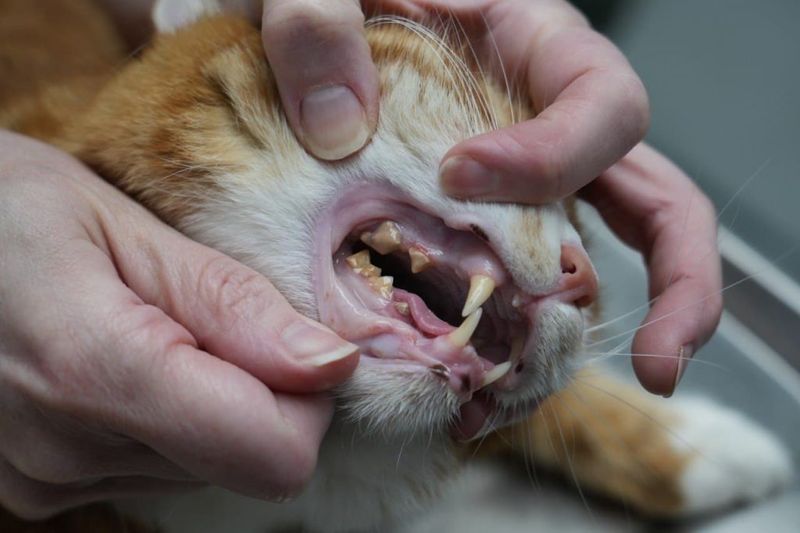
Fighting plaque can be as simple as spiking your cat’s water bowl. Dental water additives work like liquid toothpaste, helping to reduce bacteria and freshen breath throughout the day.
Most are tasteless and odorless, so even picky cats won’t notice. Simply add a few drops to fresh water daily according to package directions. This passive approach works especially well for cats who resist more direct dental care methods.
6. Try Dental Wipes
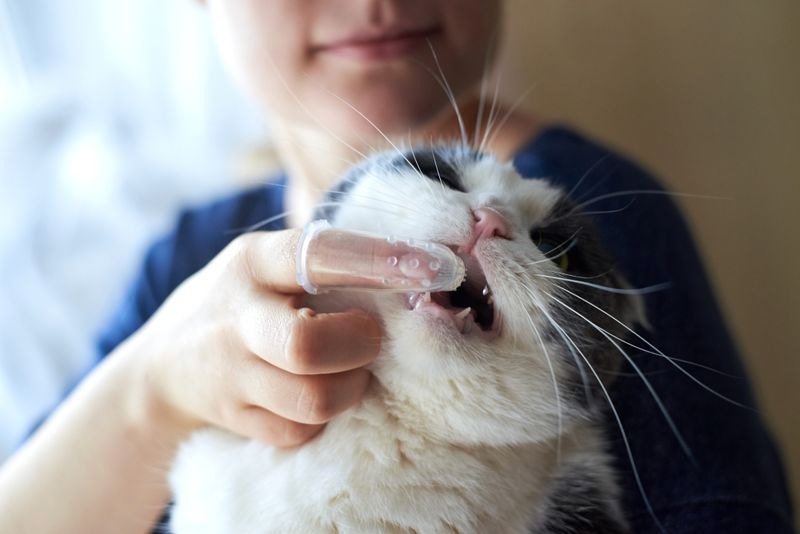
Finger wipes offer a brushless alternative for stubborn cats. These pre-moistened cloths contain enzymes that break down plaque when wiped across teeth and gums.
Many cats tolerate wipes better than brushes since the sensation feels more like normal petting. Wrap the wipe around your finger and quickly swipe along the gumline where plaque accumulates most. Even a quick daily wipe makes a significant difference in dental health.
7. Schedule Regular Vet Checks
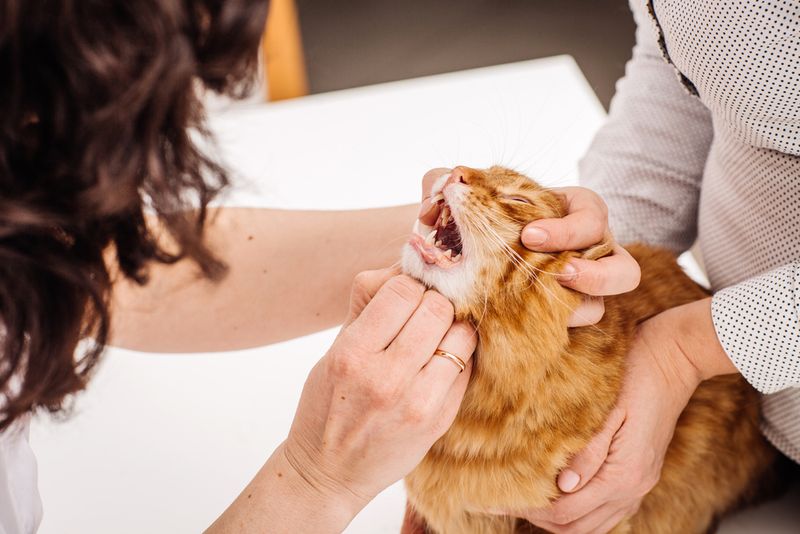
Professional eyes catch dental problems before they become painful emergencies. Veterinarians can spot early signs of tooth resorption, gingivitis, and other common feline dental issues during routine exams.
Aim for twice-yearly dental check-ups, especially for cats over seven. Your vet might recommend professional cleanings under anesthesia when necessary. These deep cleanings remove hardened tartar that home care simply can’t touch.
8. Master Proper Brushing Technique
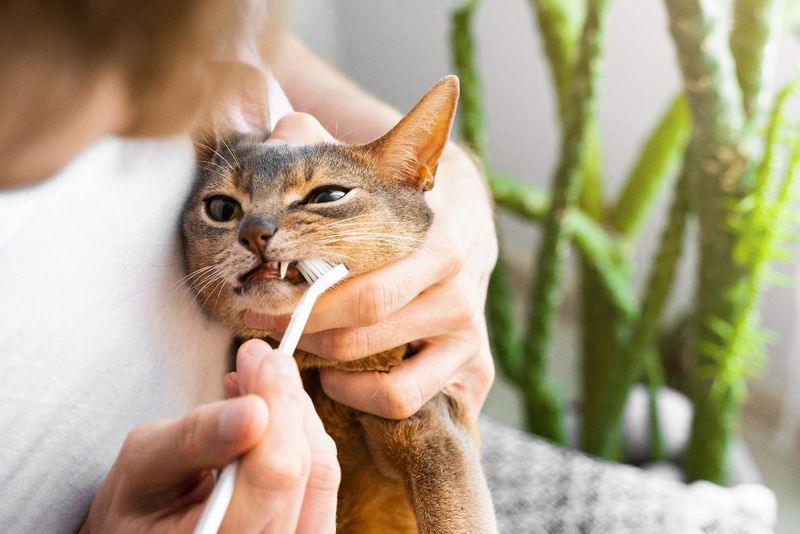
Angle matters when brushing those tiny teeth! Focus on the outer surfaces where the teeth meet the gums – that’s where disease-causing plaque loves to hide.
Use gentle circular motions with a soft pet toothbrush. Skip human toothpaste (it contains harmful ingredients) and use only cat-specific enzymatic toothpaste with flavors like poultry or fish. Even 30 seconds of brushing several times weekly significantly reduces plaque.
9. Recognize Warning Signs
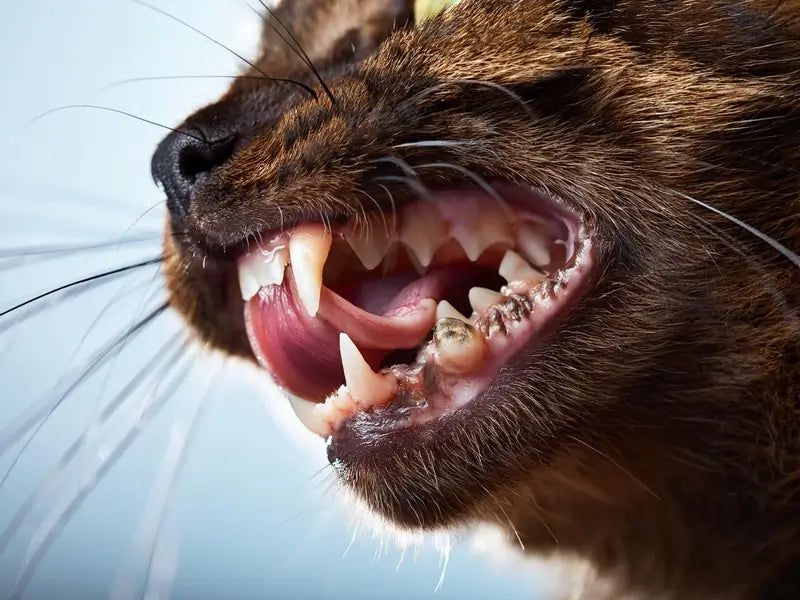
Bad breath isn’t just unpleasant – it’s your cat’s way of signaling trouble! Other dental red flags include pawing at the mouth, drooling, bleeding gums, or suddenly dropping food while eating.
Changes in eating habits often indicate mouth pain. Watch for cats who suddenly prefer soft food or chew on one side only. Early intervention prevents minor issues from becoming major extractions, saving both suffering and your wallet.
10. Consider Dental Sprays
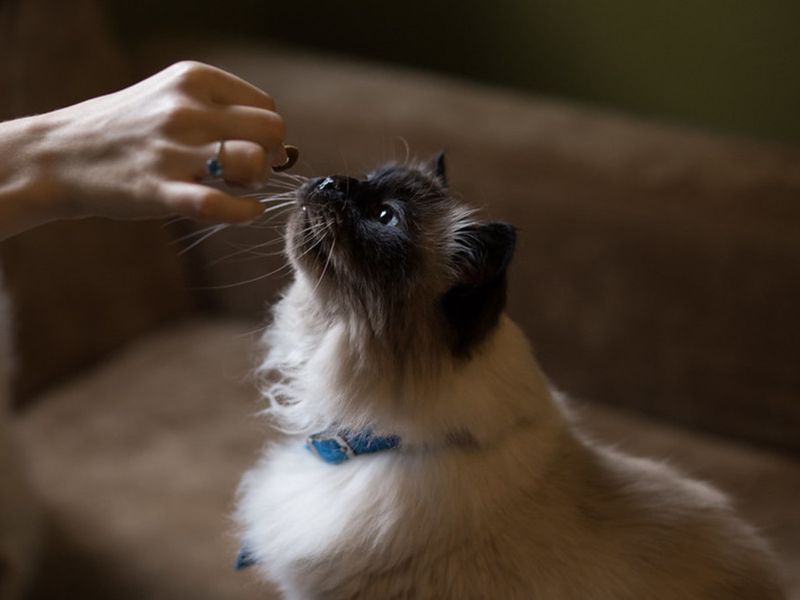
Sprays offer another hands-off approach to feline dental care. These products contain enzymes that break down plaque and bacteria when misted onto teeth and gums.
Most cats tolerate a quick spritz better than brushing. Look for products containing chlorhexidine or enzymes specifically formulated for plaque control. Consistency matters more than quantity – a daily light application works better than occasional heavy treatments.
11. Provide Dental Chew Toys
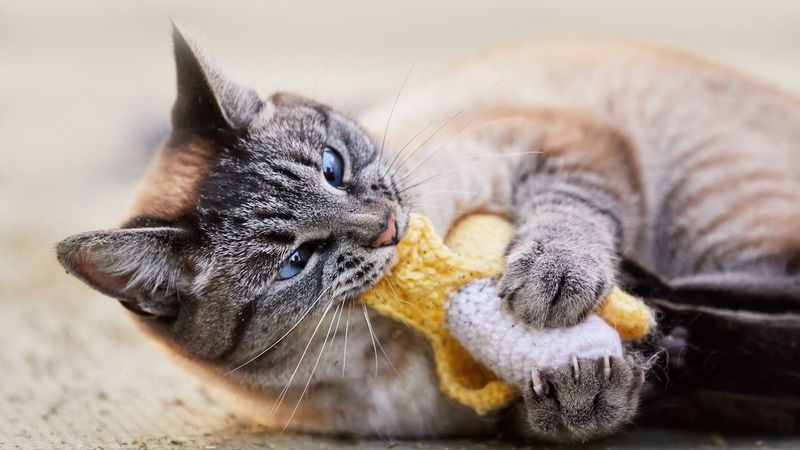
Raw bones aren’t the only natural teeth cleaners! Specially designed dental chew toys made from safe rubber or similar materials can help scrape away plaque while satisfying your cat’s natural chewing instincts.
Look for toys infused with catnip to increase interest or those that can hold treats as motivation. Supervise chewing sessions to prevent accidental ingestion of small pieces. Rotate toys regularly to maintain your cat’s interest in these dental helpers.

